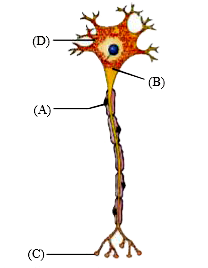Choose the correct alternative (a), (b), (c) or (d) for each of the questions given below :
In an Astronomical Telescope of Refracting type :
Objective should have small focal length
Objective should have large focal length
Eyepiece should have large focal length
Both objective and eyepiece should have large focal length
The correct Answer is:B
To solve the question regarding the characteristics of an astronomical telescope of the refracting type, we need to analyze the options provided and understand the fundamental principles behind the design of such telescopes.
1. Understanding the Components of an Astronomical Telescope:
- An astronomical telescope consists of two main lenses: the objective lens and the eyepiece (or ocular lens).
- The objective lens is responsible for gathering light from distant objects and forming a real image.
- The eyepiece lens magnifies this image for viewing.
2. Focal Length of the Objective Lens:
- The objective lens should have a large focal length. This is because a longer focal length allows the telescope to collect light from distant celestial objects more effectively, resulting in clearer and brighter images.
- A larger focal length also helps in reducing the aberrations and providing a better field of view.
3. Focal Length of the Eyepiece:
- The eyepiece lens typically has a shorter focal length compared to the objective lens. This is because a shorter focal length eyepiece provides higher magnification of the image formed by the objective lens.
4. Evaluating the Options:
- Option (a): Objective should have small focal length - Incorrect.
- Option (b): Objective should have large focal length - Correct.
- Option (c): Eyepiece should have larger focal length - Incorrect.
- Option (d): Both objective and eyepiece should have larger focal length - Incorrect.
5. Conclusion:
- The correct answer is Option (b): The objective should have a large focal length.
- An astronomical telescope consists of two main lenses: the objective lens and the eyepiece (or ocular lens).
- The objective lens is responsible for gathering light from distant objects and forming a real image.
- The eyepiece lens magnifies this image for viewing.
- The objective lens should have a large focal length. This is because a longer focal length allows the telescope to collect light from distant celestial objects more effectively, resulting in clearer and brighter images.
- A larger focal length also helps in reducing the aberrations and providing a better field of view.
- The eyepiece lens typically has a shorter focal length compared to the objective lens. This is because a shorter focal length eyepiece provides higher magnification of the image formed by the objective lens.
- Option (a): Objective should have small focal length - Incorrect.
- Option (b): Objective should have large focal length - Correct.
- Option (c): Eyepiece should have larger focal length - Incorrect.
- Option (d): Both objective and eyepiece should have larger focal length - Incorrect.
- The correct answer is Option (b): The objective should have a large focal length.
Similar Questions
Knowledge Check
- Question 1 - Select One
Choose the correct alternative (a), (b), (c) or (d) for each of the questions given below :
For an adiabatic change of a perfect gas the relation between pressure and volume is :APVγ=constantBPγV=constantCPV = constantDPVγ−1=constant - Question 2 - Select One
Choose the correct alternative (a), (b), (c) or (d) for each of the questions given below :
In a nuclear reactor, cadmium rods are used as :AControl rodsBFuel rodsCCoolantDModerator - Question 3 - Select One
Choose the correct alternative (a), (b), (c) or (d) for each of the questions given below :
A point charge .q. is kept at each of the vertices of an equilateral triangle having each side .a.. Potential energy isA(14πε0)3q2a2B(14πε0)3qaC(14πε0)3q2aD(14πε0)3qa2
Choose the correct alternative (a), (b), (c) or (d) for each of the questions given below :
Which of the following is not a unit of time ?View SolutionChoose the correct alternative (a), (b), (c) or (d) for each of the questions given below :
The distance between successive nodes and anti-nodes is :View SolutionChoose the correct alternative (a), (b), (c) or (d) for each of the questions given below :
A copper and a steel wire having same length and diameter are joined end-to-end. When a force is applied at the end of the wire, the net length of the wire increases by 1 cm. The wires will have :View SolutionChoose the correct alternative (a), (b), (c) or (d) for each of the questions given below :
Curie temperature is the temperature above which :View SolutionChoose the correct alternative (a), (b), (c) or (d) for each of the questions given below :
Which of the following is approximately the rate of solar energy (in KW) falling per m2 on the surface area of the earth ?View Solution



